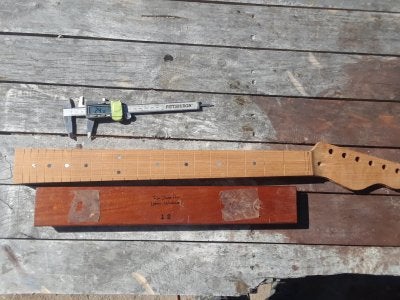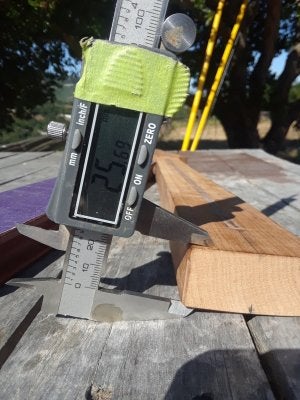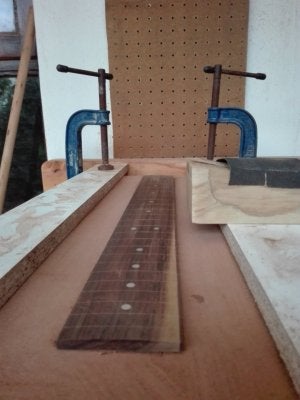Verzila
Tele-Meister
I need to put a radius on my flat (unfretted) fretboard. I'm limited in space and availability of tools so I'm looking at radius sanding blocks.
I understand that there are any number of pitfalls in this (twisting the block as I'm sanding, going too far off to one side), so my first idea would be to knock up a jig of a pair of parallel guides on either side of the neck, as a starting point, but I will be grateful if anyone has any advice for getting best results
I understand that there are any number of pitfalls in this (twisting the block as I'm sanding, going too far off to one side), so my first idea would be to knock up a jig of a pair of parallel guides on either side of the neck, as a starting point, but I will be grateful if anyone has any advice for getting best results








